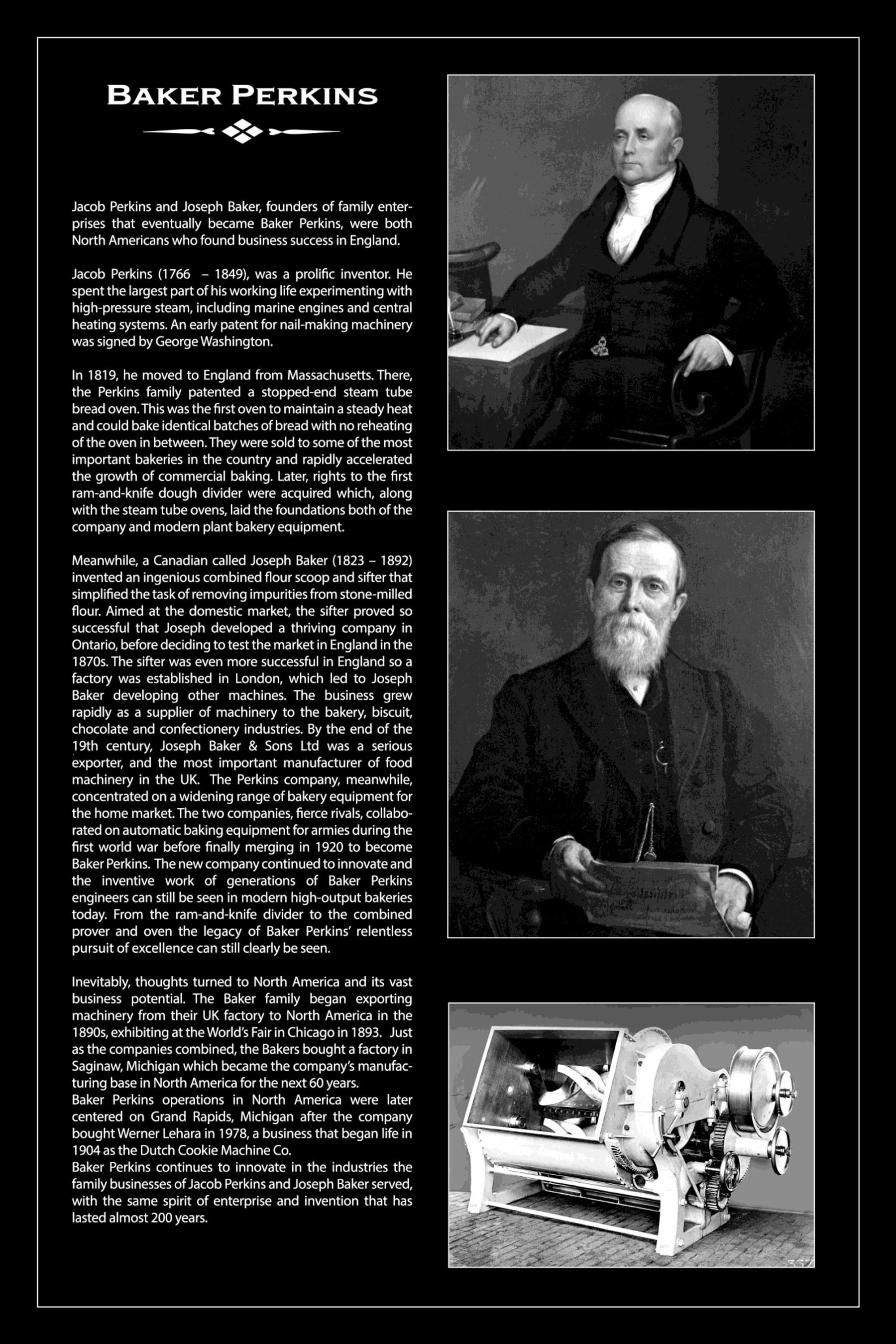Jacob Perkins and Joseph Baker, founders of family enterprises that eventually became Baker Perkins, were both North Americans who found business success in England.
Jacob Perkins (1766-1849), was a prolific inventor: he spent the largest part of his working life experimenting with high-pressure steam, including marine engines and central heating systems. An early patent for nail-making machinery was signed by George Washington.
In 1819, he moved to England from Massachusetts. There, the Perkins family patented a stopped-end steam tube bread oven. This was the first oven to maintain a steady heat and could bake identical batches of bread with no reheating of the oven in between. They were sold to some of the most important bakeries in the country and rapidly accelerated the growth of commercial baking.
Later, rights to the first ram-and-knife dough divider were acquired which, along with the steam tube ovens, laid the foundations both of the company and modern plant bakery equipment.
Meanwhile, a Canadian called Joseph Baker (1823-1892) invented an ingenious combined flour scoop and sifter that simplified the task of removing impurities from stone-milled flour. Aimed at the domestic market, the sifter proved so successful that Joseph developed a thriving company in Ontario, before deciding to test the market in England in the 1870s.
The sifter was even more successful in England so a factory was established in London, which led to Joseph Baker developing other machines. The business grew rapidly as a supplier of machinery to the bakery, biscuit, chocolate and confectionery industries. By the end of the 19th century, Joseph Baker & Sons Ltd was a serious exporter, and the most important manufacturer of food machinery in the UK. The Perkins company, meanwhile, concentrated on a widening range of bakery equipment for the home market.
The two companies, fierce rivals, collaborated on automatic baking equipment for armies during the first world war before finaly merging in 1920 to become Baker Perkins.
The new company continued to innovate and the inventive work of generations of Baker Perkins engineers can still be seen in modern high-output bakeries today. From the ram-and-knife divider to the combined prover and oven the legacy of Baker Perkins’ relentless pursuit of excellence can still clearly be seen.
Inevitably, thoughts turned to North America and its vast business potential. The Baker family had begun exporting machinery from their UK factory to North America in the 1890s, exhibiting at the World’s Fair in Chicago in 1893. Just as the companies combined, the Bakers bought a factory in Saginaw, Michigan which became the company’s manufacturing base in North America for the next 60 years.
Baker Perkins operations in North America were later centered on Grand Rapids, Michigan after the company bought Werner Lehara in 1978, a business that began life in 1904 as the Dutch Cookie Machine Co.
Baker Perkins continues to innovate in the industries the family businesses of Jacob Perkins and Joseph Baker served, with the same spirit of enterprise and invention that has lasted almost 200 years.
Click on the images below to view .pdf files of the inductee’s biography and plaque.


